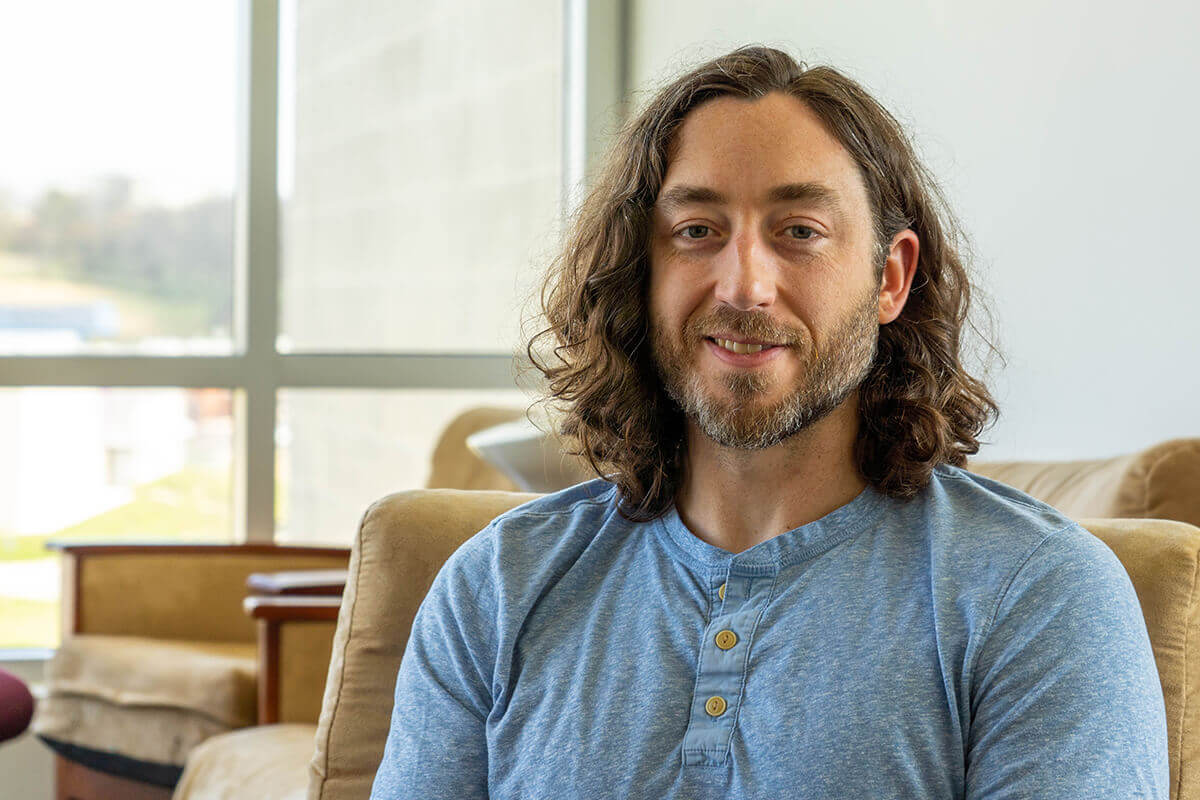
April 4, 2023
This month, Brian Williams will mark 17 years as a full-time employee of VTTI, having served as a research specialist and then senior research specialist before moving into his current role of research associate. However, his involvement with VTTI goes back to 2003, when he was hired part time during his undergraduate years at Virginia Tech.
Over the course of those three years as a student employee, he served as an in-vehicle experimenter, a confederate driver, and an on-road experimenter in a variety of studies in addition to working as a data reductionist on the 100-Car Naturalistic Driving Study. Regarding that experience, Brian says, “I found the work interesting, and performing human-factors experiments aligned perfectly with my studies in psychology. When I graduated from Virginia Tech, I immediately applied for a full-time position.”
Brian earned his Bachelor of Science in Psychology in 2005, and he has also completed several graduate courses in the Industrial Systems Engineering track as a Commonwealth Campus student at Virginia Tech. He was hired into the Infrastructure-Based Safety Systems (IBSS) group in 2006, working under Ron Gibbons, Ph.D.

Brian Williams in his VTTI office.
He continues to work in IBSS, where the research is focused on roadway and vehicle lighting systems, roadway delineation, and vehicle-infrastructure cooperative safety systems. Brian notes that his responsibilities include nearly all aspects of conducting research. “I help to design studies both on the Smart Road test tracks and out in the field,” he says, “and I create the documentation to have our projects approved by the Institutional Review Board. I supervise a team of three research specialists and, along with them, I take part in conducting the research, reducing and analyzing the data, and reporting the results.”
With its focus on the impact of lighting, much of IBSS’s research is conducted at night. Their Impact of Solid State Roadway Lighting on Melatonin in Humans study was conducted in collaboration with the Department of Neurology at Thomas Jefferson University. To study how LED roadway lighting affected melatonin levels in participants, researchers had to draw blood and saliva samples from participants and keep them awake out on the Smart Roads as late as 3 a.m. They also had to keep all the lights in the building off to control how much light participants were exposed to, which meant that the research team had to work in the dark as well.
Brian says that he enjoys the act of designing study procedures. He explains, “We start out with a goal for what information we want to learn from the study, and figuring out how to get there is almost like solving a puzzle. It’s also very rewarding to see something you’ve studied start showing up in vehicles such as the innovative hazard lighting technology being implemented into vehicles, or on public roads such as the variable speed limit system installed on Interstate 77 in Fancy Gap, VA.”
On a personal level, Brian and his wife Danielle have been married for 16 years and have three children: Burke, Campbell, and Adeline.
Brian is proud of what VTTI accomplishes and expresses that in the following statement: “The research we do here creates real-world impacts that save lives. So much of the safety technology in today’s vehicles and roads came through VTTI first.”